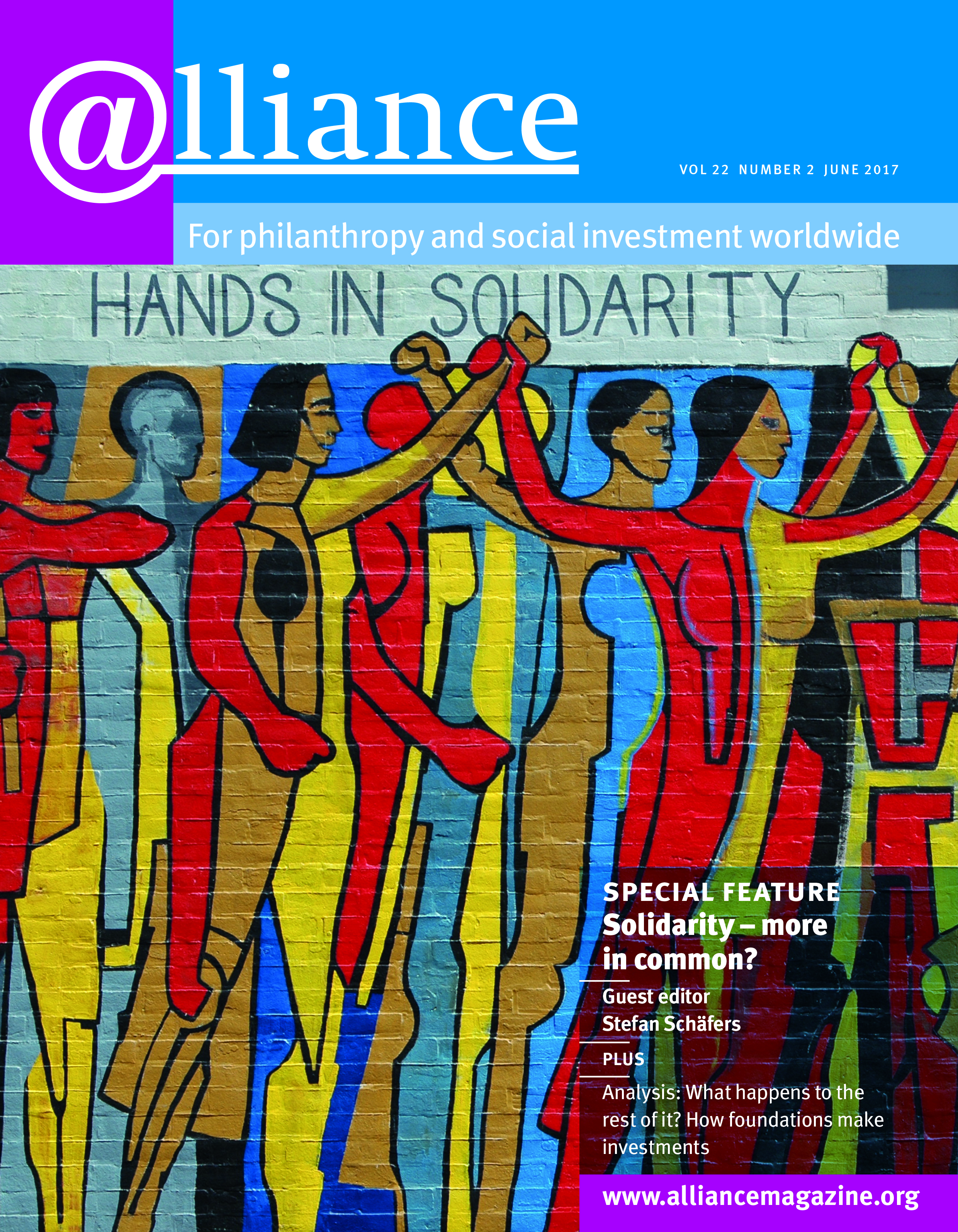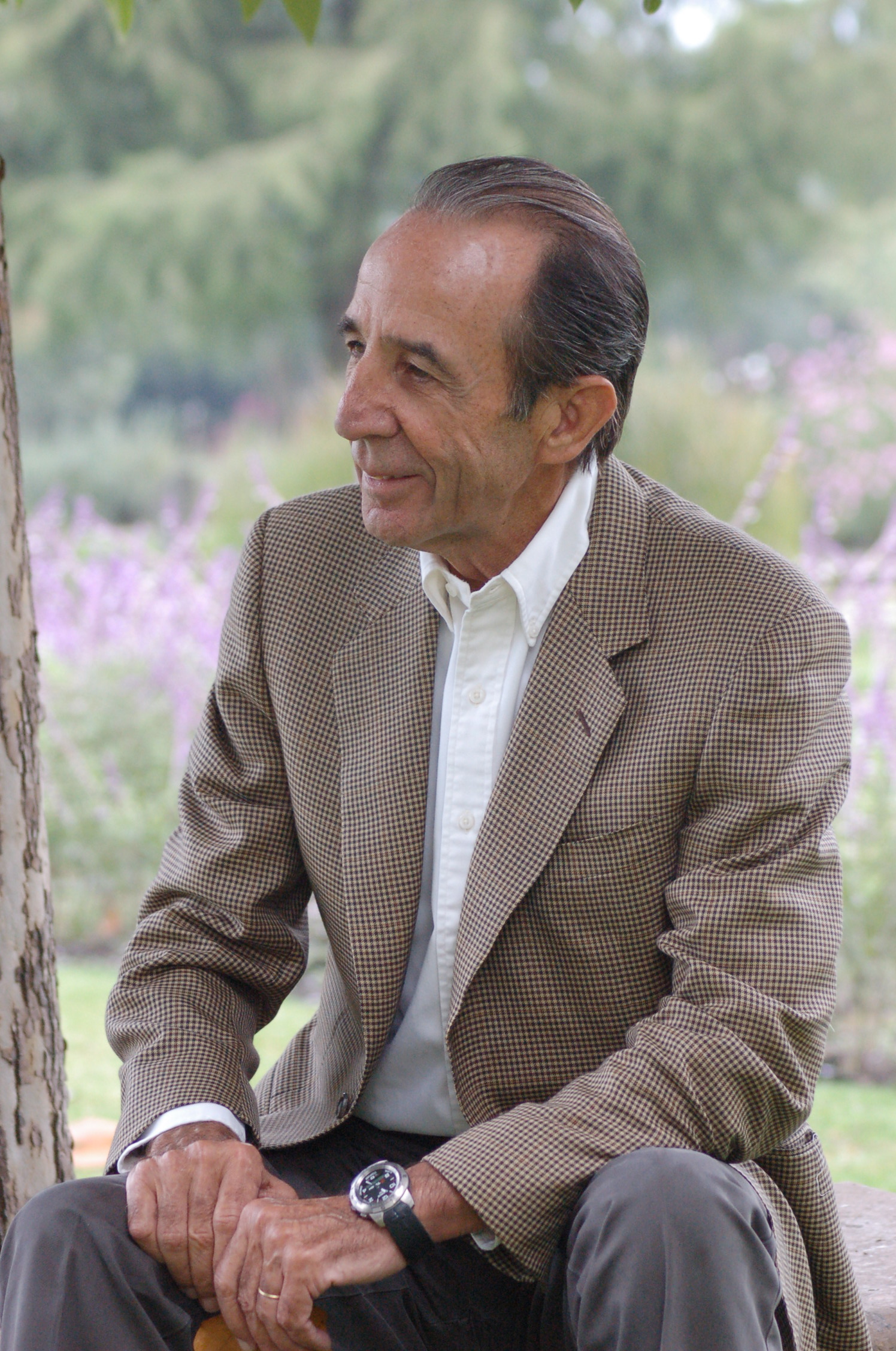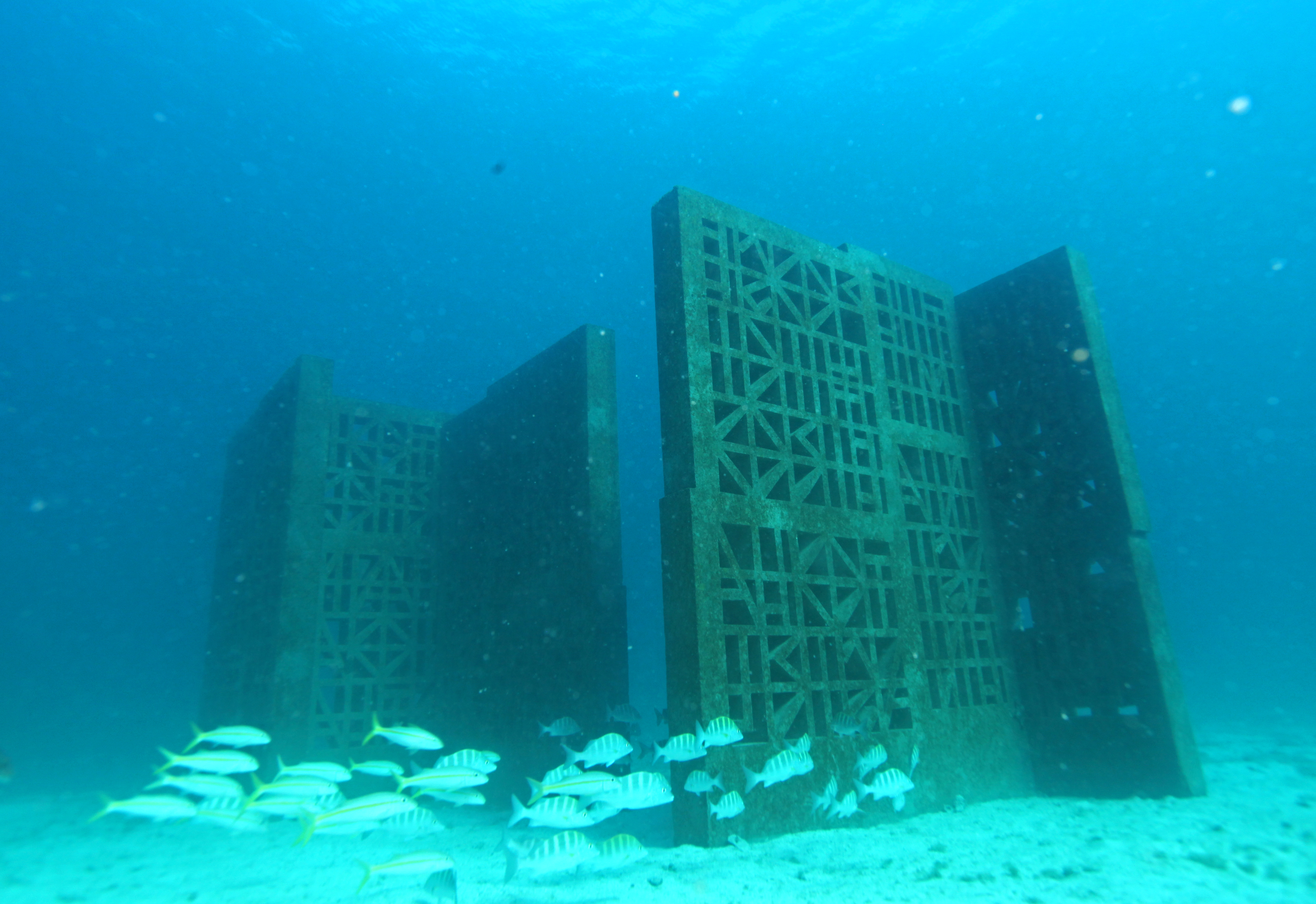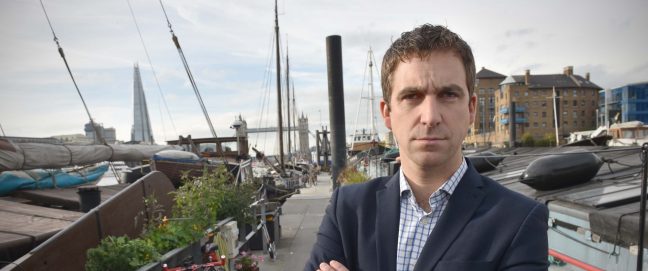As the interview he gave to Alliance in 2004 illustrates, Mexican philanthropist Manuel Arango is a long-time champion of philanthropy and civil society. Thirty years ago, he founded the Mexican Centre for Philanthropy (CEMEFI) and he has been connected with philanthropy infrastructure body, WINGS, since the initial meeting in Oaxaca. It was at the recent WINGSForum in Mexico City that he spoke to Charles Keidan about CEMEFI and WINGS, but also about the work of his own foundation, the Manuel Arango Foundation, and the values and vision that underlie all his philanthropy.
At the beginning of the WINGS conference you said that ultimately, how we think about philanthropy comes down to the values we hold. Can you elaborate on what you meant?
First, of all, for me philanthropy is a very extensive concept – it’s civil society, non-profit organizations, and beyond. This was at the heart of our thinking when we started CEMEFI and a big part of it is the concept of people donating the most important thing in life which is their time, because that you cannot replenish.
So for us the concept of philanthropy was to move Mexican citizens to adopt this view that we are all part of the environment in which we live, that we all must take care of that environment, natural and social.
If we can really educate people with values, if we all feel that we are responsible for the world that we live in, whether you’re in a business or university or you’re a politician, we certainly would have a better world.
How did you get involved in the first place?
I came through the door of the environment, the natural environment. I was worried about many environmental problems more than 40 years ago and I became a member of one of the oldest institutes, the Environmental Institute of Mexico.
I realized that just as I was involved in the environment, there were others involved in education, in health, in charity, in other issues – people giving their time, their talent, their effort, their money – so that became my passion and I got more involved in the sector.
When we founded the Mexican Centre for Philanthropy, we tried to bring all that together, so I went from the very specific environmental task, which in itself is complex, to the world of justice, philanthropy, charity, equality – everything. And that’s where I am at this late stage in my life.
In the old days it was very easy for me to get up and speak because I was very passionate and I thought I knew what had to be done and how. Now it’s the reverse. Now I see the young people and I sit there waiting for them to speak out and act. They are wise, and I imagine them thinking, what is this old guy going to tell us?
But, going back to your initial question, I say let’s go back to something very simple which was there at the very beginning: if we can really educate people with values, if we all feel that we are responsible for the world that we live in, whether you’re in a business or university or you’re a politician, we certainly would have a better world.
So I’m going back to the essence of everything. Generosity, empathy, all these words make a good citizen and a good citizen makes a good country.
For us the concept of philanthropy was to move Mexican citizens to adopt this view that we are all part of the environment in which we live, that we all must take care of that environment, natural and social.
Are there enough good citizens among Mexico’s wealthiest people contributing those values? Do you think they could and should be doing more?
Patience is another thing I’ve learned.
 At first, I was desperate because I thought that things could be accomplished at a much faster pace, and then you learn to be humble and to enjoy the small victories because things unfortunately take much longer than we would like.
At first, I was desperate because I thought that things could be accomplished at a much faster pace, and then you learn to be humble and to enjoy the small victories because things unfortunately take much longer than we would like.
Yes, in Mexico we are a long way from where we would like to be, but if you go back a few years we have advanced tremendously.
In CEMEFI we have incrementally created programmes that have been very successful, like the Corporate Social Responsibility programme. At first, there was some resistance, but it put corporations on a learning curve of not just doing things for cosmetic reasons, to doing things really as part of the solution to problems and realizing that it was a win-win with employees, with clients, with the communities in which they operate, with society.
At first, I was desperate because I thought that things could be accomplished at a much faster pace, and then you learn to be humble and to enjoy the small victories because things unfortunately take much longer than we would like.
So is corporate behaviour much better in Mexico now than it was then?
I think that it is continually improving, little by little. For many years we promoted to companies the standard of designating 1 per cent of profits before tax to their own projects, their own foundations or to the social causes of their choice.
We recently decided to create an award or recognition for those companies who publicly commit to the 1 per cent standard and said if we could get 50 corporations to participate, we’d launch it. Nearly 80 were recognized in the first year and the number continues to grow.
Money is really the easiest thing to contribute, but we wanted corporations to contribute talent, the talent of the individual. We have worked very much with governments because they don’t realize the potential of the citizens willing to be part of the solution. We have struggled and we continue to struggle to get them to give incentives for non-profit organizations. I believe that the non-profit world is the balance between government and business. Those are two powerful entities. You cannot say that the role of the citizen is just to vote and that’s it. Citizens have to be empowered.
I think the day is coming when citizens will be empowered, and strengthened by their values; the sector can finally be the link between market forces and government.
You founded CEMEFI and you’ve seen the evolution of WINGS. How involved have you been in this process of trying to build a global philanthropy infrastructure?
The two main pillars in philanthropy are the grant-givers and the grant-seekers. The grant-givers are the ones who have the potential, with their money, to get ideas, projects started. The grant-seekers are the ones who have ideas, projects to provide services, but they don’t have the resources. So if you are able to make these two areas grow and communicate, the more grant-givers you have and the more well-organized projects from the grant-seekers, things starts to bloom.
So I am very proud to be at the WINGSForum seeing, not the number, but the quality of the people who are here. Behind some of those people are the Ford Foundation, the Mott Foundation – organizations that have been operating for years and have great experience. WINGS also helps to reproduce similar initiatives and projects.
It’s a growing sector and I think the day is coming when citizens will be empowered, and strengthened by their values; the sector can finally be the link between market forces and government. If capital and business drives the world, it’s very serious because the more powerful you are, the more you can shape public policies. So we have to get involved not only in helping people, but in attacking the problems that cause poverty or crime, or other issues. We have to change that, so we have to be able to shape policy.
You cannot say that the role of the citizen is just to vote and that’s it. Citizens have to be empowered.
You have your own foundation, the Manuel Arango Foundation. What’s involved in that and what do you do?

The Xochitla Parque Ecologica, a project of the Manuel Arango Foundation, covers 70 hectares and aims to be self-sustainable.
Outside of CEMEFI, I have my own personal projects and organizations that I have been funding through my foundation. One is on environmental education.
We publish books, hold conferences, etc.
But we also have an organization that consists of a 70-hectare park on the outskirts of Mexico City that we use to educate schoolkids, among other things.
It’s a public park, but you pay an entry fee and for food, with all income generated going toward reaching self-sustainability. For more than 20 years, it hasn’t achieved that goal, but now we are beginning to see for the first time that we’re reaching it.
Of course it’s going to take a long time, because even if you have the money, you cannot have a beautiful park immediately, you have to plant trees, grow everything. We also provide diverse environmental education programmes, as well as special events for the public and meeting rooms and gardens for corporate activities.
We were so worried it was going to be destroyed so, after seven years of very hard work, we managed, with the help of the government, international and local foundations and donors, to buy the land from the 36 people who owned it and we then donated the island to the Mexican nation for its conservation in perpetuity.
What’s the name of the park?
It’s a Nahuatl name, Xochitla with an X, which means ‘the place where there are flowers’. We had a contest when we started the project and that was the winning entry.

The Manuel Arango Foundation managed, with the help of the government, international and local foundations and donors, to buy Espiritu Santo Island in the Sea of Cortez and donate it to the nation to be conserved in perpetuity.
For the last 30 years, we have also run a very important annual awards programme called the Premios Compartir.
We present awards in five areas; to an individual for his or her social leadership; to an exemplary volunteer programme; and to outstanding organizations in the areas of community development, social care and public involvement in social issues.
When we started the awards, there were 15 people in the room, now they are celebrated in a theatre with more than 700 people in attendance. The award is very important, not so much for the money, but because it’s like a seal of approval. If you have the award, the chances are you will be able to raise more money.
But one of the things that we are most proud of is an island of 10,000 hectares in the Sea of Cortez. It’s a jewel, it’s beautiful, pristine, not developed.
It was communal land, but some years ago, the law changed in Mexico and the sale of the island was authorized.
We were so worried it was going to be destroyed so, after seven years of very hard work, we managed, with the help of the government, international and local foundations and donors, to buy the land from the 36 people who owned it and we then donated the island to the Mexican nation for its conservation in perpetuity.
You know, the Sea of Cortez is called the aquarium of the world, it’s a very beautiful place. One last thing on that story, I took a friend of ours there, a well-known sculptor. I told her the history and said we’d thought of creating a sculpture for the island to give credit and commemorate all the people that helped us, but we decided, it’s pristine, where are we going to place a sculpture? Six months later she wrote to me and said she’d had an idea and she’d do the sculpture – and install it on the sea bed.
So we have these 14 magnificent screens that make up the sculpture, each screen weighing approximately three tonnes, all different, put exactly on the site she selected at the bottom of the sea.
And they’re full of sea life, so it’s art and marine life combined. You should go and see them. Are you a diver?
No.
Well, it’s not very deep!
Manuel Arango is founder of the Mexican Centre for Philanthropy (CEMEFI) and the Manuel Arango Foundation. Email via Nancy Pearson npearson@grupoconcord.com.mx






Comments (0)